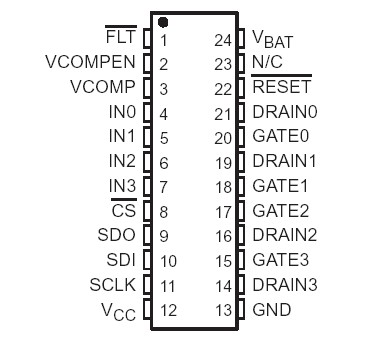TPIC44L02: Features: 4-Channel Serial-in Parallel-in Low-Side Pre-FET DriverDevices Are CascadableInternal 55-V Inductive Load Clamp and VGS Protection Clamp for External Power FETsIndependent Shorted-Load/Sho...
floor Price/Ceiling Price
- Part Number:
- TPIC44L02
- Supply Ability:
- 5000
Price Break
- Qty
- 1~5000
- Unit Price
- Negotiable
- Processing time
- 15 Days
SeekIC Buyer Protection PLUS - newly updated for 2013!
- Escrow Protection.
- Guaranteed refunds.
- Secure payments.
- Learn more >>
Month Sales
268 Transactions
Payment Methods
All payment methods are secure and covered by SeekIC Buyer Protection PLUS.

 TPIC44L02 Data Sheet
TPIC44L02 Data Sheet








